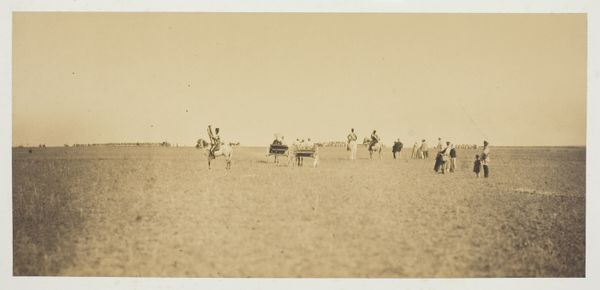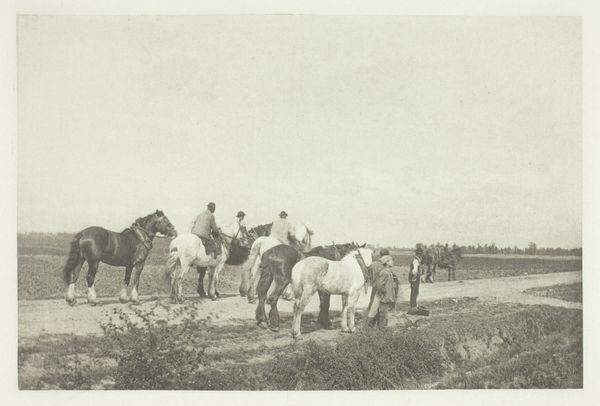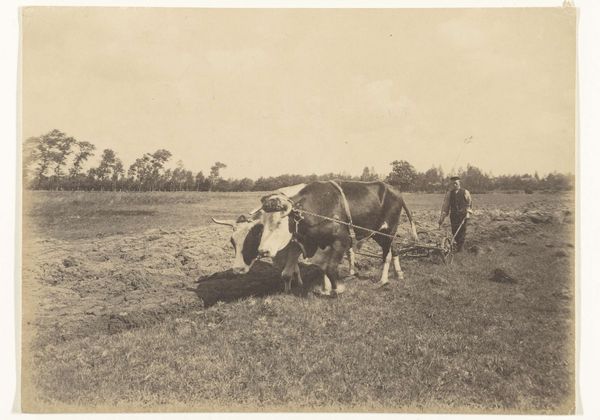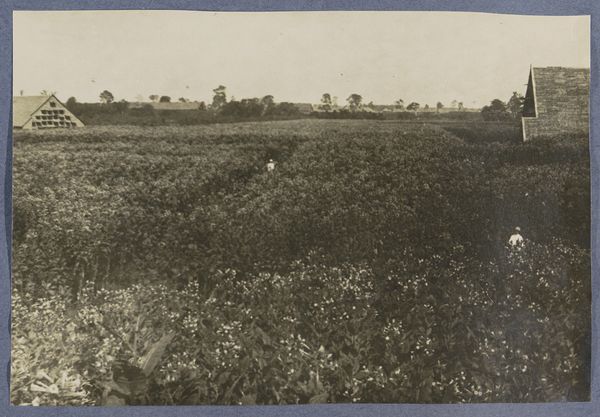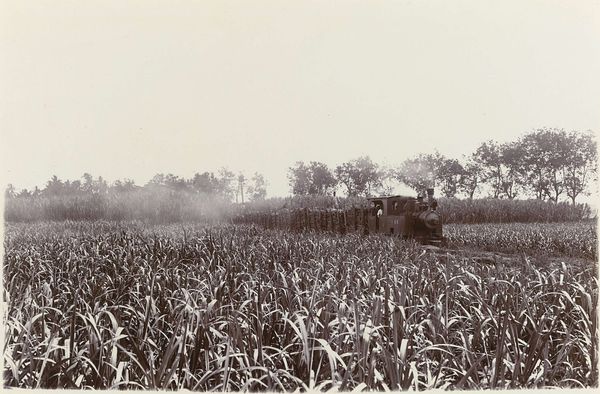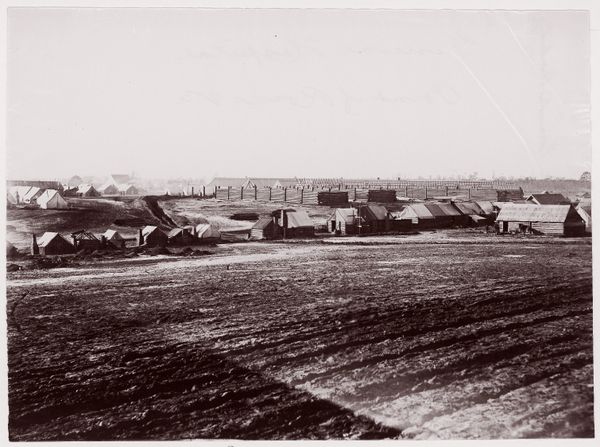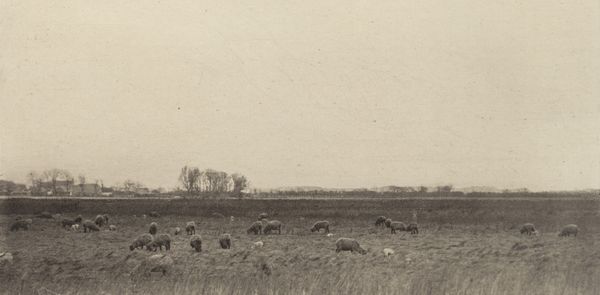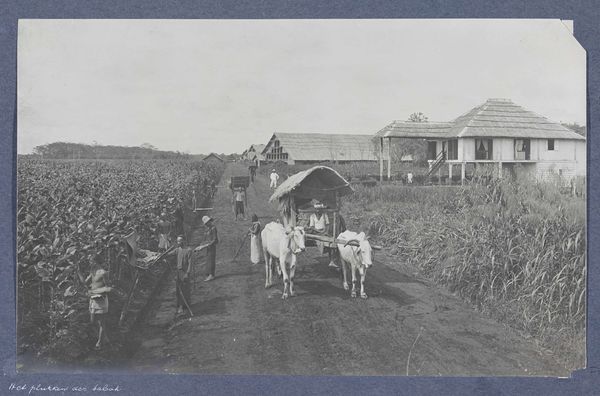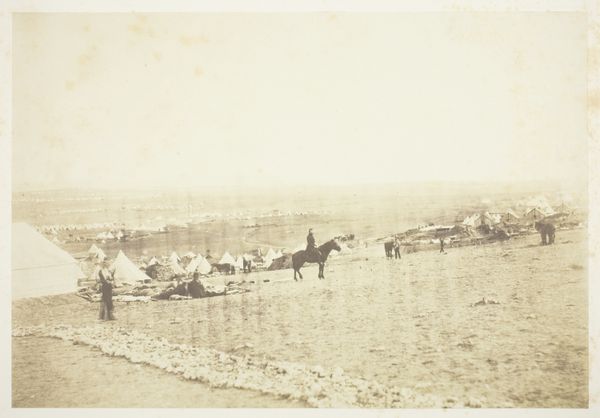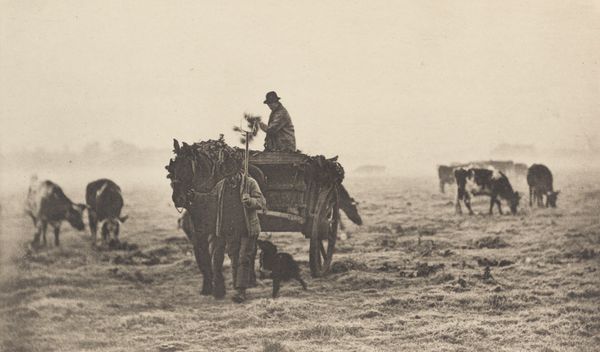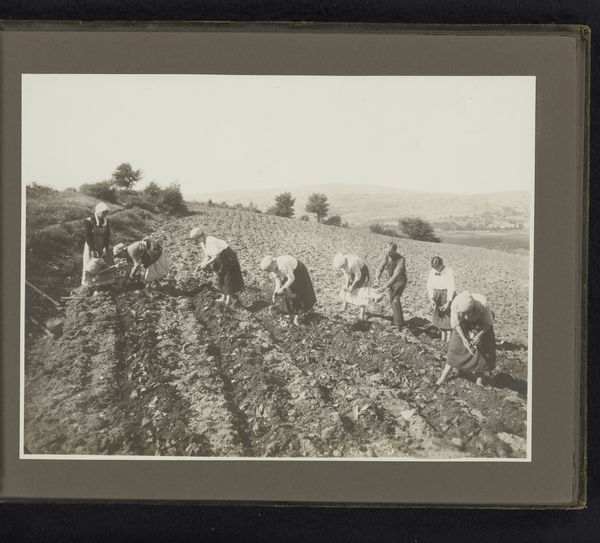
Dimensions: image: 7.6 × 15 cm (3 × 5 7/8 in.)
Copyright: National Gallery of Art: CC0 1.0
Curator: Here we have Peter Henry Emerson’s gelatin silver print, “Marsh Farm in Early Spring,” dating from around 1890 to 1893. Editor: Bracing. It's so bleak, but not in a miserable way, more like a hopeful starkness. I keep imagining the smell of upturned earth, you know, that promise that something will actually *grow* there eventually. Curator: The photograph is a fascinating example of Emerson's Pictorialist approach. He advocated for photography as an art form, and you can certainly see his desire to capture the natural world in an artistic way. The farm feels so integral to rural labor at the turn of the century. Editor: I think you’ve hit on why I feel that hope in it. He's focused not just on documenting rural life, but on some really integral facet. That horse pulling the plow looks bone-tired, but utterly essential to everything around him. Does that make sense? Curator: It absolutely does. Emerson strived for "naturalistic" photography, mirroring human vision more accurately, so while composed, the photograph captures a slice of the day to day. It attempts to reflect a “real” world, even within the artistic movement he was participating in. This wasn't about glamorizing rural existence; it was a perspective on a lifestyle on the brink of significant change. Editor: And that perspective has real grit, doesn't it? There's a story here, embedded in that grey, monochrome landscape. You can feel it working its way up to the surface. Maybe that’s the ‘early spring’ of the title. A new beginning is in the process. Curator: Indeed. Emerson’s dedication to documenting East Anglia's landscapes offers a crucial glimpse into the economic and social conditions shaping agricultural life. The romantic, even impressionistic elements never overshadow that focus. Editor: This print has such lasting power. It gives off almost like an anthem to quiet toil, framed as landscape art. Something pretty and something profound, and the beautiful part is the simplicity of it. I will remember that for a long time. Curator: It’s certainly a testament to the potential for photography to be as evocative and insightful as painting or literature. We see society in the land itself.
Comments
No comments
Be the first to comment and join the conversation on the ultimate creative platform.
